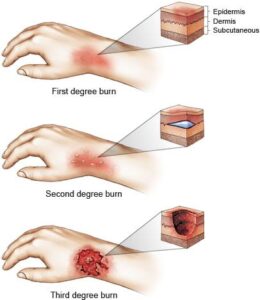The Evolution of Liposculpture: Advancements in Body Contouring Technology
Liposculpture is a modern cosmetic procedure aimed at reshaping the body by removing unwanted fat from specific areas, offering a more contoured and refined appearance. Unlike traditional liposuction, liposculpture focuses on both removing fat and sculpting the body’s contours for a natural-looking finish. This technique is highly sought after for its precision and ability to target stubborn fat deposits that resist diet and exercise. Ideal for individuals close to their desired weight but struggling with localized fat, liposculpture presents an effective solution to fine-tune the body’s silhouette.
Historical Development of Body Contouring Techniques
Early Methods
Before liposuction, body contouring was rudimentary. Doctors used various methods to alter human form. These techniques often resulted in significant tissue trauma.
Surgeons experimented with different approaches to remove fat and shape the body areas. However, these early methods lacked precision and safety.
Liposuction Era
The introduction of liposuction in the 1970s marked a revolution. This method offered a way to target fat deposits directly. It changed how surgeons approached body contouring.
Liposuction allowed for more definition and less invasive procedures. The abdomen became one of the most common areas for this treatment.
Less Invasive Shift
Over decades, there has been a shift towards less invasive techniques. Surgeons now prioritize minimizing tissue trauma and recovery time.
Technologies like ultrasound-assisted liposculpture further refined the process. They offer better control over body contouring outcomes.
Transition from Liposuction to Liposculpture
Refined Focus
Liposculpture has emerged as a sophisticated advancement of liposuction. It shifts the focus from merely reducing body fat to enhancing and sculpting the body’s shape. This technique prioritizes aesthetics, offering more than just volume reduction.
The transition involves a meticulous approach. Surgeons now aim for precision in reshaping areas of the body. They use finer instruments which allow for detailed sculpting. This ensures smoother and more appealing results.
Enhanced Techniques
The adoption of finer instruments marks a significant evolution in body sculpting techniques. These tools enable surgeons to carve out desired shapes with greater accuracy. Patients benefit from this precision, achieving results that align closely with their aesthetic goals.
-
Bullet list:
-
Improved aesthetic outcomes
-
Reduced recovery time
-
Minimized risk of complications
-
Surgeons can now target small, specific areas for enhancement or reduction, making liposculpture suitable for a wide range of patients. The process is not only about cutting away unwanted fat but also about strategically adding or repositioning it to create the desired contour.
Evolution of Liposculpture Techniques
Manual to Power-Assisted
Liposculpture has transitioned from manual techniques to more advanced methods. Initially, surgeons used the syringe technique. They manually removed fat with syringes. This required significant physical effort and time.
The introduction of power-assisted liposculpture marked a turning point. It uses a device that vibrates rapidly. This makes breaking up and removing fat easier and faster for surgeons. The precision it offers greatly enhances patient outcomes.

Ultrasound and Laser Integration
Technological advancements have further refined liposculpture procedures. The integration of ultrasound technology was a major step forward. It emulsifies fat before removal, making the process smoother.
Similarly, laser technologies have been adopted in recent years. They not only help in emulsifying fat but also promote skin tightening post-surgery. These innovations have made liposculpture safer and more effective.
Minimally Invasive Methods
The evolution towards minimally invasive techniques has significantly impacted recovery times. Before these developments, patients faced longer recovery periods due to larger incisions. Now, methods like the wet technique reduce bleeding and swelling by injecting fluid into tissues before surgery. This approach is less traumatic for the body, leading to shorter recovery times.
Advancements in Liposuction Technology
Tumescent Technique
The tumescent technique has revolutionized liposculpture. This method involves injecting a large volume of fluid into the fatty areas before removal. The solution contains anesthetic and medication to minimize bleeding.
This approach drastically reduces bleeding risks. Patients experience less discomfort and faster recovery times. Surgeons can remove large volumes of fat with greater safety.
High-Definition Lipo
High-definition liposuction takes body contouring to the next level. It allows plastic surgeons to sculpt the body with precision, targeting superficial fat that defines muscle tone.
Surgeons use advanced suction cannulas for this purpose. They meticulously remove fat deposits, enhancing natural contours. Patients achieve more defined and athletic appearances as a result.
Technology-Enhanced Fat Reduction
SmartLipo and VASER Lipo exemplify technological advancements in fat removal. SmartLipo uses laser technology to liquefy fat before extraction, making it easier to remove through suction.
VASER Lipo, or liposelection, employs ultrasound waves to break apart fatty deposits selectively. These methods offer benefits such as:
-
Reduced trauma to surrounding tissues
-
Enhanced skin tightening effects
-
Precise targeting of adipose tissue
Both technologies signify a leap forward for surgeons and patients alike in achieving desired aesthetic outcomes with minimal invasiveness.
Safety Measures in Liposuction Procedures
Surgical Guidelines
Stricter surgical guidelines now play a crucial role. They ensure the safety of liposculpture procedures. These guidelines focus on minimizing complications. They cover everything from surgical time to reducing significant blood loss.
The use of normal saline and sodium bicarbonate has become standard. This approach reduces risks associated with fluid imbalance. It also enhances the effectiveness of local anaesthetics.
Patient Screening
Enhanced screening processes are vital for patient safety. Before undergoing liposculpture, patients undergo thorough evaluations. These assessments determine their suitability for this surgical procedure.
Factors like overall health and potential risk for complications are carefully considered. This process helps in identifying individuals who may face higher levels of risk during or after the procedure.
Anesthesia Advances
Advances in anesthesia techniques have significantly improved procedure safety. The shift towards using local anaesthetic reduces both blood loss and recovery time.
Patients now experience less discomfort during the surgery. Moreover, these advances have made it possible to perform closed liposuction more effectively and safely.
Innovations in Energy Delivery Liposculpture
Laser Technology
Laser energy has transformed liposculpture. It liquefies fat before removal. This means less trauma to the tissue.
Doctors use a syringe for precision. They target fat cells without harming nearby blood vessels or neurovascular bundles. This approach promotes quicker recovery.
Radiofrequency Assistance
Radiofrequency-assisted lipolysis (RFAL) is another leap forward. It removes fat and tightens skin at the same time.
This technique uses energy delivery through cannulas or end cannulas, often made from titanium probes. The heat not only dissolves fat but also encourages collagen production, leading to firmer skin.
Ultrasound Innovation
Ultrasound-assisted lipolysis targets stubborn fat deposits effectively. High-frequency sound waves break down fat cells.
This method is especially useful for areas difficult to shape with traditional lipoaspirate techniques like tumescent infiltration or syringe liposuction. It ensures smoother results and enhances lymphatic flow post-surgery.
Innovations in energy delivery have made liposculpture safer and more effective than ever before:
-
Laser technology minimizes tissue damage by liquefying fat first.
-
RFAL simultaneously removes fat and tightens the skin.
-
Ultrasound technology efficiently targets stubborn fats, improving outcomes significantly.
These advancements follow closely on safety measures discussed earlier, providing patients with better experiences and outcomes in body contouring procedures.
Current Trends in Liposculpture
Non-Surgical Options
Liposculpture is evolving. Now, people often choose non-surgical methods. These include cryolipolysis and radiofrequency treatments.
Cryolipolysis freezes fat cells without surgery. It’s popular because it has minimal downtime. Radiofrequency treatments melt fat through heat and also tighten the skin. Both options are less invasive than traditional liposculpture.
Subtle Results
Today, more patients prefer natural-looking outcomes. They want subtle changes rather than dramatic transformations.
This trend reflects a shift in beauty standards towards realism and authenticity. Patients seek improvements that enhance their natural body shape instead of completely altering it. This approach ensures results look seamless and harmonious with the overall physique.
Personalized Plans
Personalization is key in modern liposculpture.
Doctors now create tailored treatment plans for each patient. They might combine different techniques to achieve the best result possible.
For example, a plan could include both cryolipolysis to reduce fat and radiofrequency treatments for skin tightening afterwards. This combination approach can address multiple concerns at once, leading to optimal outcomes that meet individual goals.
Future Directions in Body Contouring Technology
AI Predictions
The integration of AI and machine learning into liposculpture represents a significant leap forward. These technologies could soon allow cosmetic surgeons to predict the best outcomes for individual patients with remarkable accuracy. By analyzing vast amounts of data, including patient’s body type and desired results, AI can assist in creating personalized treatment plans.
This advancement means that procedures will not only become more efficient but also yield better aesthetic results. The ability to foresee how changes will look on a patient’s unique body shape before surgery is groundbreaking. It ensures higher satisfaction rates and minimizes the risk of revisions.
Minimally Invasive Techniques
As demand for body contouring grows, so does the need for less invasive techniques with faster recovery times. Researchers are tirelessly working to develop methods that reduce downtime and discomfort while maintaining high-quality results.
One promising area is the use of regenerative techniques involving the patient’s own tissues. This approach not only reduces risks associated with foreign materials but also promotes natural-looking enhancements. Innovations might include using excess skin or soft tissue from one area to enhance another, such as augmenting the female breast or reducing redundant axillary skin without implants.
These future directions aim at providing safer, quicker, and more tailored treatments that meet patients’ needs more effectively than ever before.
Summary
The journey of body contouring techniques, particularly liposculpture, reflects a significant evolution from basic liposuction to advanced, technology-driven procedures. The historical development, transition phases, and technological advancements have collectively enhanced the safety, efficacy, and outcomes of liposculpture. Innovations in energy delivery methods and the continuous refinement of techniques underscore the commitment to patient safety and aesthetic excellence. Current trends indicate a growing preference for minimally invasive procedures, with future directions likely focusing on further technological innovations and personalized treatment plans.
As liposculpture continues to evolve, it remains essential for individuals considering this procedure to seek information from reputable sources and consult with experienced professionals. The advancements in liposculpture not only offer improved results but also emphasize the importance of safety measures in cosmetic procedures. For those interested in exploring the possibilities of liposculpture, taking the step to consult with a qualified specialist can provide valuable insights into how these evolving techniques can meet their aesthetic goals.
Frequently Asked Questions
What is the difference between liposuction and liposculpture?
Liposuction removes fat from the body, while liposculpture not only removes fat but also reshapes and contours the body for a more aesthetically pleasing appearance.
How have liposculpture techniques evolved over time?
Liposculpture techniques have evolved to become less invasive with improved precision in fat removal and contouring, incorporating advanced technology such as laser and ultrasound assistance.
What are the latest advancements in liposuction technology?
The latest advancements include high-definition tools, enhanced safety measures during surgery, and refined techniques that minimize tissue damage and speed up recovery time.
Are there any specific safety measures for liposuction procedures?
Yes, modern safety measures include thorough patient evaluation pre-surgery, use of safer anesthesia methods, precise surgical techniques to minimize risks, and post-operative care guidelines to ensure safe recovery.
How do innovations in energy delivery improve liposculpture outcomes?
Innovations like laser-assisted or ultrasound-assisted devices help break down fat cells more efficiently before removal. This results in smoother contours, less trauma to surrounding tissues, reduced pain post-procedure, and quicker recovery times.
What are current trends in the field of liposculpture?
Current trends focus on minimally invasive procedures with faster recovery times. There’s also an emphasis on personalized treatments that cater to individual body shapes for natural-looking results.
Where is body contouring technology headed in the future?
Future directions aim at further minimizing invasiveness while enhancing accuracy through robotics-assisted surgeries. Research is also focusing on non-surgical options that offer significant contouring benefits without downtime.










